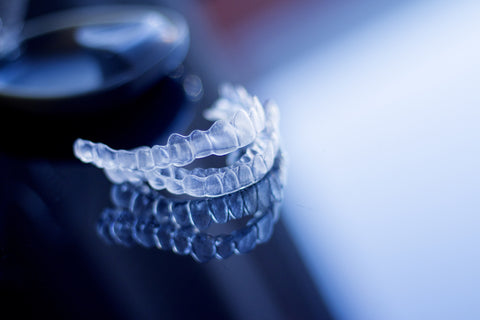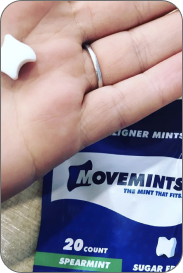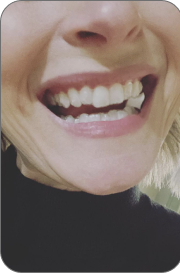Starting on your Invisalign journey is like setting sail on a clear sea toward a brighter smile.
A standout feature of these aligners is the attachments—those tiny, almost invisible anchors that work tirelessly to perfect your teeth.
But what happens when one decides to jump ship?
If you find yourself staring at a missing attachment, wondering what you should do is natural.
With a bit of insight and the right steps, you'll find the solution is simpler than you think!
How Invisalign Attachments Impact Your Treatment

Invisalign attachments are tiny, strategic tools in your smile’s transformation.
These discreet, tooth-colored dots are essential for directing teeth to their correct positions, ensuring your aligners work efficiently.
They may be small, but their impact on the success of your Invisalign treatment is huge!
Invisalign attachments serve an important purpose in treatment by providing extra grip points for the smooth plastic aligners to grasp onto for moving teeth.
Attachments give orthodontists more control, especially when rotating or tipping teeth that may be stubborn to shift.
These small bumps are made from composite resin and strategically placed on certain teeth that need extra force.
While attachments may not always accelerate treatment time, they are key tools for getting that ideal new smile.
Immediate Steps to Take if Your Invisalign Attachment Falls Off
If an attachment falls off, remain calm and act fast:
- Inspect your aligner and mouth
- Avoid habits that may stress other attachments
- Continue to maintain oral hygiene
A quick call to your orthodontist will set you back on the path to alignment with minimal delay.
Contact Your Orthodontist
If an attachment becomes partially or fully dislodged, contact your orthodontist's office as soon as possible for reattachment.
The attachment acts as an anchor for the aligner to apply targeted pressure against while moving that tooth.
Without the attachment, the tooth could shift out of position or movement could be delayed.
Luckily, most orthodontists can bond a replacement attachment the same day to keep your treatment on schedule!
Until you can be seen, take care when removing your Invisalign aligners to avoid jostling the loose attachment.
Also, skip wearing the current tray with the missing attachment. You can continue wearing previous trays if they're approved by your provider.
How Invisalign Attachments are Reapplied and Maintained
Once an attachment is lost, reapplication is a simple and essential step.
Your orthodontist will handle the quick fix, while your role is to continue diligent oral care and follow specific instructions. This will help ensure the longevity of the newly applied and existing attachments!
Explaining the Reapplication Process
The reapplication process is quick and painless.
Your orthodontist will:
- Thoroughly clean the tooth
- Roughen the surface slightly with a dental bur or acid gel
- Apply a bonding agent
- Position the new attachment
- Harden it with a curing light
This process re-bonds the attachment securely to enamel.
It's important to replace attachments before proceeding to your next aligner tray.
The attachment acts as an anchor for proper tooth movement. Without it, your teeth could shift out of place or create gaps, delaying your progress.
Preventing Future Issues
A little foresight goes a long way in preventing attachment loss.
Mindful habits, careful handling of aligners, and regular dental visits work in concert to keep your treatment plan moving smoothly.
Tips for Protecting Your Attachments
While attachments occasionally fall off, you can take measures to protect them. Here are some helpful tips:
- Be extra diligent with oral hygiene, carefully flossing and brushing around attachments.
- Avoid very hot, acidic, crunchy, and sticky foods that could weaken bonds.
- Take care when inserting new aligner trays by using your tongue, not your fingers.
- When removing trays, start with the back molars first.
- Remove your aligners before eating.
- Attend all scheduled attachment checks to replace worn ones proactively.
Enhance Your Invisalign Experience: The Best Aligner Accessories?

Spruce up your Invisalign experience with accessories like Movemints, designed to freshen breath and keep aligners snug.
Small additions to your routine can make a big difference in comfort and convenience.
Movemints: Breath Mints for Aligners

Movemints breath mints are a convenient aligner accessory designed to help seat trays while keeping breath fresh.
These sugar-free mints feature a patented groove fitting between the upper and lower aligners for positioning that feels great!
Movemints offer benefits beyond helping with aligner seating, like:
- Fighting dry mouth
- Freshening breath
- Preventing tooth decay
- Providing an aligner-safe gum alternative
Invisalign Attachments FAQ
What should I avoid eating to prevent attachments from coming off?
Avoid very hot, acidic, crunchy, sticky, and hard foods that could weaken attachment bonds or jostle them loose. Examples include chips, nuts, popcorn, caramel, apples, corn on the cob, and ice. Take care when biting into foods in general.
Can I continue to wear my aligners if an attachment comes off?
No, stop wearing the current aligner tray with the missing attachment. Wear previous trays if approved by your provider until you can be seen for rebonding. The tooth needs reattachment before progressing.
How often do attachments need to be replaced during treatment?
Invisalign attachments may need replacing if they fall off frequently or appear worn. Your orthodontist evaluates attachments at check-ups, replacing them proactively as needed, typically every 4–8 weeks.

















